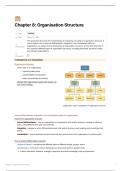College aantekeningen
Chapter 8 of the Management Course
- Vak
- Management
- Instelling
- Vrije Universiteit Brussel (VUB)
Chapter 8 from the Management CLass from year I Business Economics that was due to self-study. Notes completed with the class recording
[Meer zien]



